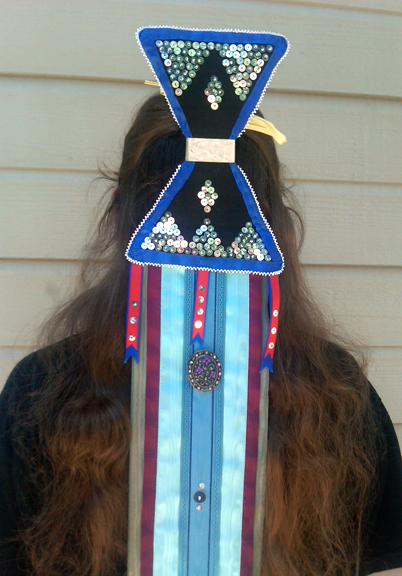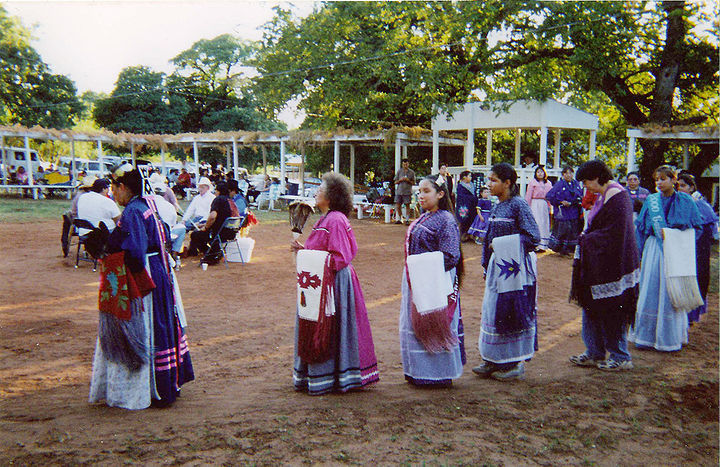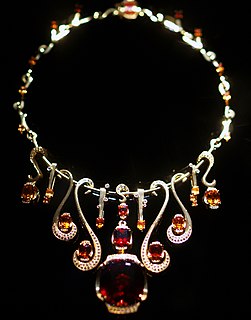
A necklace is an article of jewelry that is worn around the neck. Necklaces may have been one of the earliest types of adornment worn by humans. They often serve ceremonial, religious, magical, or funerary purposes and are also used as symbols of wealth and status, given that they are commonly made of precious metals and stones.

Kanzashi (簪) are hair ornaments used in traditional Japanese hairstyles. Some models may have been modified for self-defense.
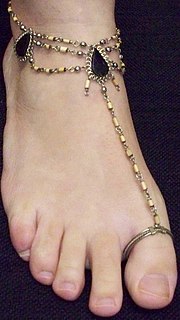
An anklet, also called ankle chain, ankle bracelet or ankle string, is an ornament worn around the ankle. Barefoot anklets and toe rings historically have been worn for at least over 8000 years by girls and women in South Asia, where it is commonly known as pattilu, payal and sometimes as nupur. They have also been worn by Egyptian women since predynastic times. In the United States both casual and more formal anklets became fashionable from the 1930s to the late–20th century. While in Western popular culture both younger men and women may wear casual leather anklets, they are popular among barefoot women. Formal anklets are used by some women as fashion jewellery. Anklets are an important piece of jewellery in Indian marriages, worn along with saris.

Moulding, also known as coving(United Kingdom, Australia), is a strip of material with various profiles used to cover transitions between surfaces or for decoration. It is traditionally made from solid milled wood or plaster, but may be of plastic or reformed wood. In classical architecture and sculpture, the molding is often carved in marble or other stones.
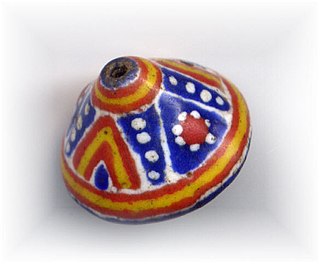
Kiffa beads are rare powder glass beads. They are named after the Mauritanian city of Kiffa, where French ethnologist R.Mauny documented them first in 1949.
A rosette is a small, circular device that is typically presented with a medal. The rosettes are either worn on the medal to denote a higher rank, or for situations where wearing the medal is deemed inappropriate, such as on a suit. Rosettes are issued in nations such as Belgium, France, Italy and Japan. Rosettes are also sometimes called bowknots, due to their shape. Moreover, a large rosette is sometimes pinned onto the ribbon which suspends a medal, typically the Officer 's badge of certain orders of chivalry.

The 1914 Star, colloquially known as the Mons Star, is a British World War I campaign medal for service in France or Belgium between 5 August and 22 November 1914.

Kurdish traditional clothing is an ongoing part of Kurdish heritage.
Khara dupatta is the traditional wedding dress of Hyderabadi Muslim brides in the Indian subcontinent. It is an elaborate wedding ensemble comprising a kurta (tunic), chooridaar, and a 6-yard dupatta.
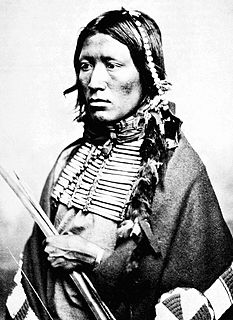
A hair drop is an ornament worn by men from Great Lakes and Plains tribes. It would be tied to the man's hair. The typical example consists of a quilled or beaded section on a strip of leather, which was later attached to an American buffalo tail. They could be over two feet long.

The cloche hat or simply cloche is a fitted, bell-shaped hat for women that was invented in 1908 by milliner Caroline Reboux. They were especially popular from about 1922 to 1933. Its name is derived from cloche, the French word for "bell".
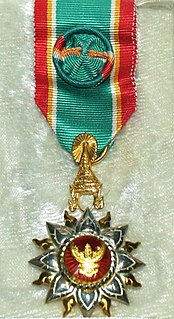
The Most Admirable Order of the Direkgunabhorn was established by King Bhumibol Adulyadej on 22 July 1991 to be bestowed upon those who have rendered devotional services to the Kingdom of Thailand. The title Direkgunabhorn (ดิเรกคุณาภรณ์) roughly translates as "Noble order of abundance and quality."

Ribbon work is an appliqué technique for clothing and dance regalia among Prairie and Great Lakes Native American tribes.

The history of Italian fashion is a chronological record of the events and people that impacted and evolved Italian fashion into what it is today. From the Middle Ages, Italian fashion has been popular internationally, with cities in Italy producing textiles like velvet, silk, and wool. During the Middle Ages and Renaissance, Italian fashion for both men and women was extravagant and expensive, but the fashion industry declined during the industrialization of Italy. Many modern Italian fashion brands were founded in the late 19th and early 20th centuries, and in the 1950s and 1960s, Italian fashion regained popularity worldwide. While many clients of Italian fashion designers are celebrities, Italian fashion brands also focus on ready-to-wear clothes.

Native American jewelry refers to items of personal adornment, whether for personal use, sale or as art; examples of which include necklaces, earrings, bracelets, rings and pins, as well as ketohs, wampum, and labrets, made by one of the Indigenous peoples of the United States. Native American jewelry normally reflects the cultural diversity and history of its makers, but tribal groups have often borrowed and copied designs and methods from other, neighboring tribes or nations with which they had trade, and this practice continues today. Native American tribes continue to develop distinct aesthetics rooted in their personal artistic visions and cultural traditions. Artists may create jewelry for adornment, ceremonies, and display, or for sale or trade. Lois Sherr Dubin writes, "[i]n the absence of written languages, adornment became an important element of Indian communication, conveying many levels of information." Later, jewelry and personal adornment "...signaled resistance to assimilation. It remains a major statement of tribal and individual identity."
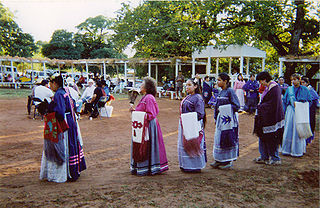
The turkey dance is one of the most important traditional dances among Caddo people. Women dance the turkey dance, while men drum and sing the songs, which describe events in Caddo history.
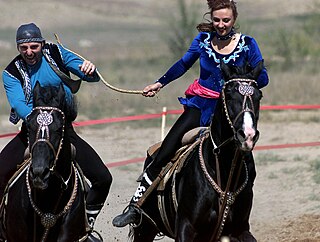
Kazakh clothing, worn by the Kazakh people, is often made of materials suited to the region's extreme climate and the people's nomadic lifestyle. It is commonly decorated with elaborate ornaments made from bird beaks, animal horns, hooves and feet. Although contemporary Kazakhs usually wear Western dress, the Turkic people wear more traditional clothing for holidays and special occasions.

Tamil people have historically been connoisseurs of fine golden jewellery, which has a history predating the Sangam period in the Indian subcontinent. Ancient Tamil literature lists out the different types of jewellery worn by women historically from head to toe. Apart from gold, jewellery was also fashioned out of silver, copper and brass.

History of clothing in the Indian subcontinent can be traced to the Indus Valley Civilization or earlier. Indians have mainly worn clothing made up of locally grown cotton. India was one of the first places where cotton was cultivated and used even as early as 2500 BCE during the Harappan era. The remnants of the ancient Indian clothing can be found in the figurines discovered from the sites near the Indus Valley Civilisation, the rock-cut sculptures, the cave paintings, and human art forms found in temples and monuments. These scriptures view the figures of human wearing clothes which can be wrapped around the body. Taking the instances of the sari to that of turban and the dhoti, the traditional Indian wears were mostly tied around the body in various ways.
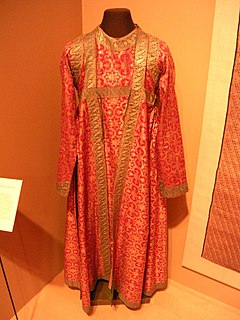
Mughal clothing refers to clothing developed by the Mughals in the 16th, 17th and 18th centuries throughout the extent of their empire in the Indian subcontinent. It was characterized by luxurious styles and was made with muslin, silk, velvet and brocade. Elaborate patterns including dots, checks, and waves were used with colors from various dyes including cochineal, sulfate of iron, sulfate of copper and sulfate of antimony were used.
